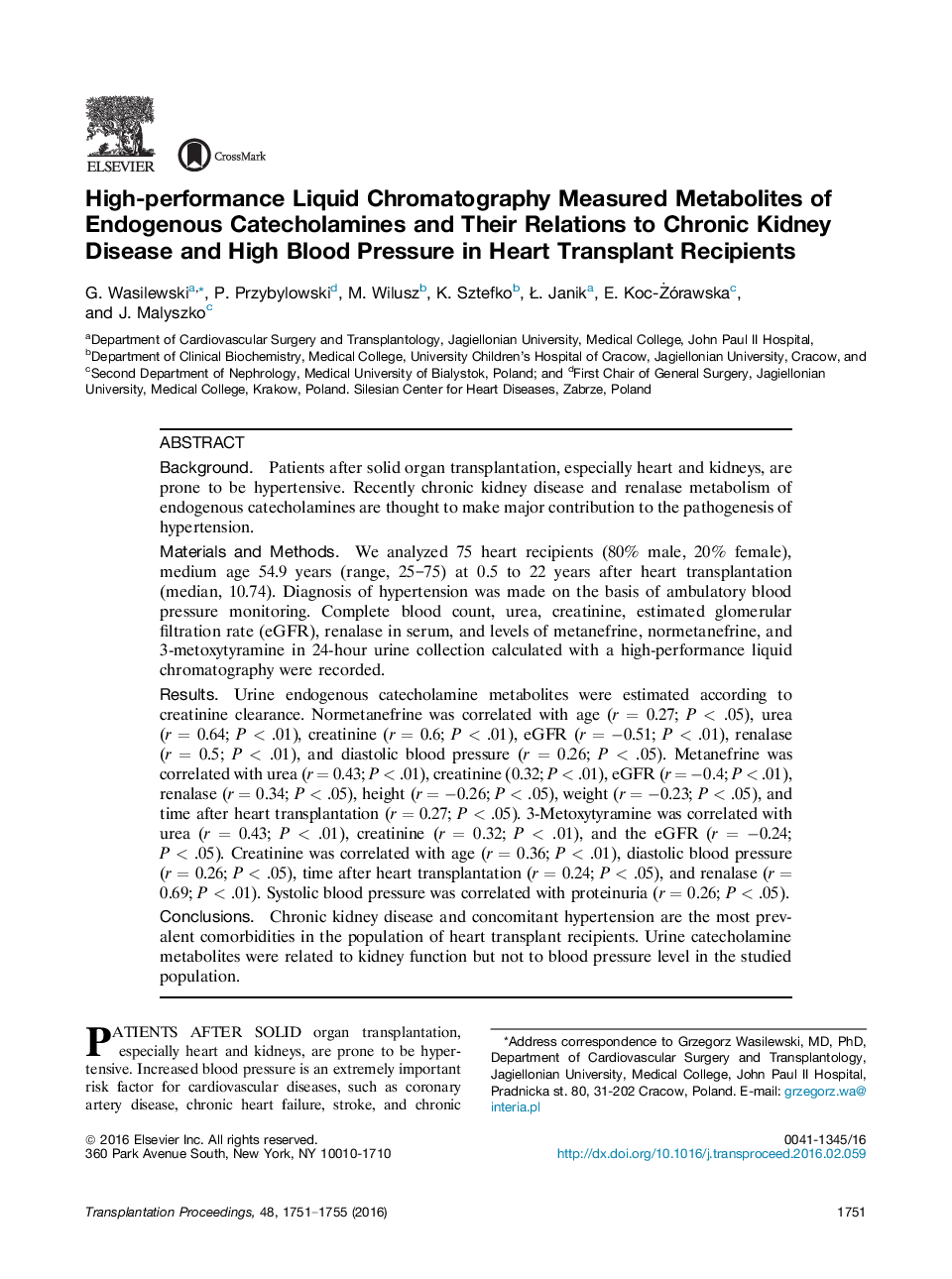| کد مقاله | کد نشریه | سال انتشار | مقاله انگلیسی | نسخه تمام متن |
|---|---|---|---|---|
| 4256112 | 1284510 | 2016 | 5 صفحه PDF | دانلود رایگان |
• Chronic kidney disease and renalase metabolism of endogenous catecholamines are thought to make a major contribution to the pathogenesis of hypertension.
• We did not find a correlation between blood pressure and the levels of urine catecholamine metabolites and serum renalase.
• Despite polytherapy, optimal blood pressure control was not achieved in many patients and was not directly related to the kidney function.
BackgroundPatients after solid organ transplantation, especially heart and kidneys, are prone to be hypertensive. Recently chronic kidney disease and renalase metabolism of endogenous catecholamines are thought to make major contribution to the pathogenesis of hypertension.Materials and MethodsWe analyzed 75 heart recipients (80% male, 20% female), medium age 54.9 years (range, 25–75) at 0.5 to 22 years after heart transplantation (median, 10.74). Diagnosis of hypertension was made on the basis of ambulatory blood pressure monitoring. Complete blood count, urea, creatinine, estimated glomerular filtration rate (eGFR), renalase in serum, and levels of metanefrine, normetanefrine, and 3-metoxytyramine in 24-hour urine collection calculated with a high-performance liquid chromatography were recorded.ResultsUrine endogenous catecholamine metabolites were estimated according to creatinine clearance. Normetanefrine was correlated with age (r = 0.27; P < .05), urea (r = 0.64; P < .01), creatinine (r = 0.6; P < .01), eGFR (r = −0.51; P < .01), renalase (r = 0.5; P < .01), and diastolic blood pressure (r = 0.26; P < .05). Metanefrine was correlated with urea (r = 0.43; P < .01), creatinine (0.32; P < .01), eGFR (r = −0.4; P < .01), renalase (r = 0.34; P < .05), height (r = −0.26; P < .05), weight (r = −0.23; P < .05), and time after heart transplantation (r = 0.27; P < .05). 3-Metoxytyramine was correlated with urea (r = 0.43; P < .01), creatinine (r = 0.32; P < .01), and the eGFR (r = −0.24; P < .05). Creatinine was correlated with age (r = 0.36; P < .01), diastolic blood pressure (r = 0.26; P < .05), time after heart transplantation (r = 0.24; P < .05), and renalase (r = 0.69; P < .01). Systolic blood pressure was correlated with proteinuria (r = 0.26; P < .05).ConclusionsChronic kidney disease and concomitant hypertension are the most prevalent comorbidities in the population of heart transplant recipients. Urine catecholamine metabolites were related to kidney function but not to blood pressure level in the studied population.
Journal: Transplantation Proceedings - Volume 48, Issue 5, June 2016, Pages 1751–1755
